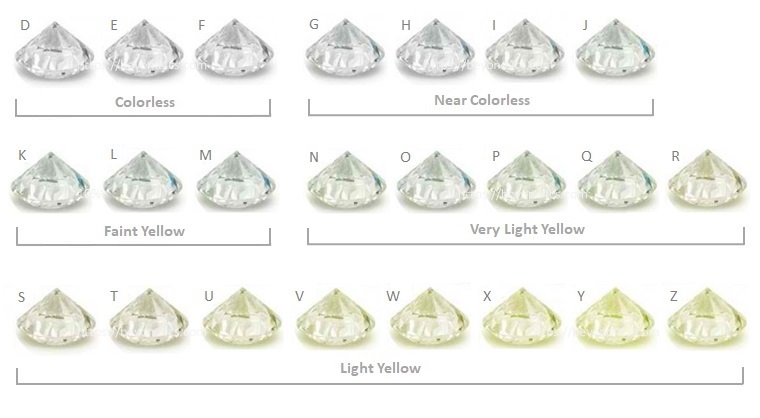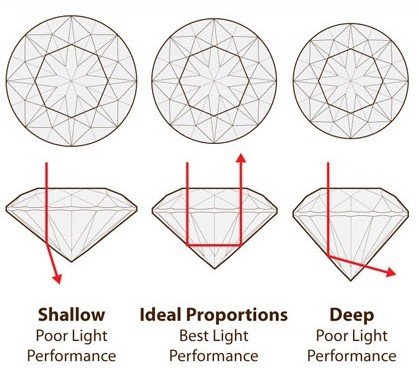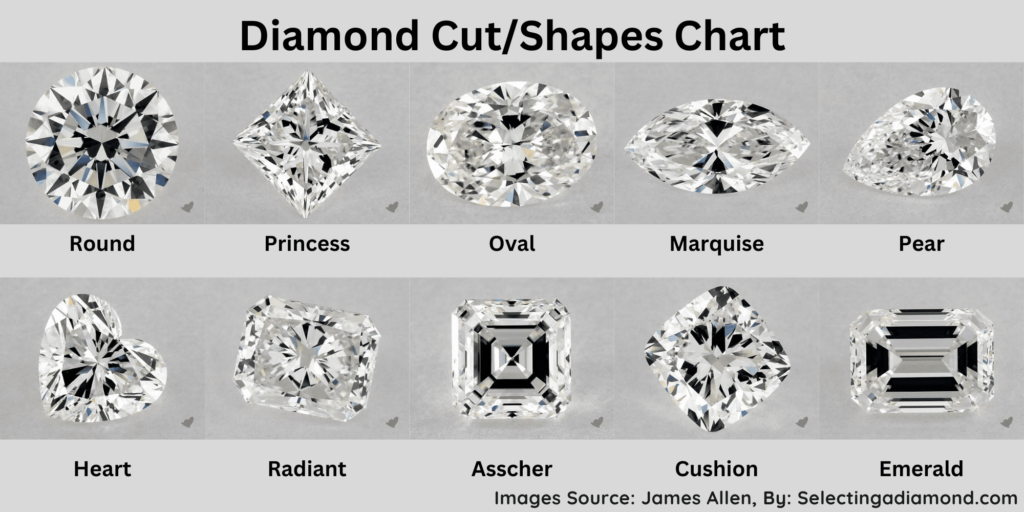In this guide, we’ll delve into the pricing of lab-grown diamonds, a topic that has garnered significant attention recently.
Lab diamonds, emerging as a sustainable and ethical alternative to traditional diamonds, offer a fascinating insight into how modern technology intersects with the luxury goods market.
We will explore the factors influencing their prices, making comparisons with natural diamonds, and provide insights into the current market trends.
Let’s begin.

Lab Created Diamond Pricing
Unlike natural, earth-mined diamonds prices, which are influenced (or let’s say, controlled) by the market, the lab created diamonds are priced differently due to various factors unique to their production and market presence.
Let’s go in a little more details to understand what factors influence lab-grown diamonds prices.
- Production Techniques: The price is influenced by the sophisticated technology used, namely HPHT (High Pressure High Temperature) and CVD (Chemical Vapor Deposition). These methods, while becoming more cost-effective over time, involve significant investment in equipment, energy, and skilled labor.
- Quality Factors: As with natural diamonds, the 4Cs (Color, Clarity, Cut, and Carat) play a pivotal role in determining the price of lab-grown diamonds. High-quality diamonds that exhibit superior color, clarity, and cut, and larger carat weights command higher prices.
- Market Dynamics: Similar to natural diamonds, the pricing of lab-grown diamonds is also affected by market demand and supply, but the main difference is that in lab grown diamonds, when demand increases, diamonds factories can increase supply, unlike mined diamonds.
As consumer interest grows and production methods become more efficient, prices can fluctuate.

Lab Diamond Characteristics (4Cs and others) Affecting Prices
In understanding the pricing of lab-grown diamonds, it’s essential to consider their key characteristics, notably the 4Cs—Color, Clarity, Cut, and Carat—along with other factors like shape and certification.
1. Color: Ranging from colorless (D grade) to light yellow or brown (Z grade), higher color grades (closer to D) are more valued and expensive.
For a balance of value and appearance, G-H grades are ideal. They appear colorless to the naked eye but are significantly less expensive than the ‘colorless’ grades (D-F). This range offers a visually appealing look without the premium price.

2. Clarity: Clarity grades range from Flawless (no inclusions or blemishes visible under 10x magnification) to Included (inclusions visible to the naked eye). Higher clarity grades like VVS (Very Very Slightly included) or VS (Very Slightly included) are more expensive.
VS2 and SI1 grades are excellent choices for those seeking a good balance between clarity and value. Inclusions in these diamonds are minor and usually invisible to the naked eye, making them a cost-effective choice for diamonds that still appear crystal clear.

3. Cut: Refers to the diamond’s proportions, symmetry, and polish. A well-cut diamond will have more brilliance and sparkle. Grades range from Excellent to Poor, with higher grades being more valuable.
Opting for Excellent grade ensures a high level of brilliance and fire. While the ‘Ideal’ cut is top-tier, it comes at a higher cost, but it’s worth it more than any other factor.

4. Carat: The weight of the diamond. Larger diamonds are rarer and thus more expensive, but the price doesn’t scale linearly with size, in other words, 2 carat isn’t just double the price of 1 carat diamond, it’s much more, but for the record, this is more notable in mined diamonds as prices go crazy in higher carats, while in lab diamonds, it remains reasonable.
While larger diamonds are more expensive, the best choice in terms of carat size depends on personal preference and budget. It’s important to balance carat size with the quality of the other Cs.
Sometimes, a slightly smaller diamond with better cut, color, and clarity can offer a more appealing and valuable choice than a larger stone with lower grades.

5. Shape: The shape of a lab-grown diamond can significantly affect its price. Round diamonds, for example, are often the most expensive due to their classic appeal and the fact that they require more rough material to be cut away during shaping.
Fancy shapes like oval, pear, or marquise can offer more uniqueness and often come at a slightly lower price. The choice of shape should align with personal preference and the style of the jewelry, balancing aesthetics with budget.

6. Certification: A certificate from a reputable lab like GIA or IGI adds value and credibility to a lab-grown diamond. It assures you of the diamond’s quality and characteristics as assessed by independent experts.
While certification adds to the cost, it’s a worthwhile investment for assurance on your diamond’s authenticity and quality. It’s particularly important for higher-priced diamonds, as it provides a detailed report of your diamond’s 4Cs, enhancing its resale value and buyer confidence.
Lab-Grown vs. Natural Diamonds: Understanding Price Disparities
When comparing lab-grown and natural diamonds, a significant factor to consider is the difference in pricing.
Lab-grown diamonds typically offer a more affordable option, often priced at about 30-40% less than their natural counterparts.
For instance, a 1-carat lab-grown diamond might cost between $1,000 to $1,500, whereas a similar natural diamond could range from $4,000 to $5,000 or more.
This price gap stems from the distinct production processes: lab-grown diamonds are created in controlled environments using advanced technology, which, while sophisticated, is less resource-intensive than the mining and processing of natural diamonds.
Additionally, natural diamonds carry a premium due to their perceived rarity and traditional appeal in the jewelry market.

Do Lab Grown Diamonds Have & Retain Value?
Lab-grown diamonds, while sharing the same physical and chemical properties as natural diamonds, have a different value trajectory.
Typically, mined diamonds retain about 50-60% of their original purchase price when resold.
For lab-grown diamonds, it’s much worse, generally we see a steeper depreciation in reselling lab diamonds, they often retain only about 10-20% of their initial value (and sometimes less than that.)
This is partly due to their lower initial cost and the rapidly advancing technology in the lab-grown diamond industry, which could potentially lower prices further.
It’s important to be aware that lab-grown diamonds are more of a value purchase for their beauty and ethical sourcing, rather than an investment expected to appreciate over time.
Buying Tips When Getting Lab Grown Diamond
When purchasing a lab-grown diamond, consider these tips for the best value:
- Research and Compare: Investigate different retailers to compare prices and quality.
- Understand the 4Cs: Familiarize yourself with the 4Cs to determine what’s most important to you.
- Consider Shape and Setting: These can impact the overall look and cost.
- Look for Certification: Ensure the diamond comes with a certification from a reputable lab.
- Plan Your Budget: Decide on a budget and stick to it, balancing size with quality.
These tips can help you make an informed decision and ensure you get a lab-grown diamond that offers both beauty and value.
Future Outlook for Lab Grown Diamonds Prices
The future outlook for lab-grown diamond pricing is subject to several influencing factors, but what the trends & recent changes are suggesting is that lab-grown diamonds is likely to see a slight decrease as production technologies improve and become more cost-effective.
Following this initial decline, prices are expected to stabilize.
This stabilization will likely result from a balance between increased demand, driven by a growing consumer preference for ethical and sustainable options, and the enhanced efficiency of production methods.
The industry’s evolution, marked by these technological advancements and changing consumer attitudes, suggests a future where lab-grown diamonds maintain a steady and accessible price point.
Lab Diamond Prices Guide: Conclusion
In conclusion, lab-grown diamond pricing involves a multifaceted approach. From the impact of production methods and the influence of the 4Cs, to the comparison with natural diamonds, each aspect contributes to their current market value.
While lab-grown diamonds offer a more affordable and sustainable alternative, their value retention differs significantly from natural diamonds.
Future pricing trends suggest a potential decrease in cost followed by stabilization, influenced by technological advancements and growing consumer demand.
This comprehensive overview provides a clearer understanding of what to expect when considering a lab-grown diamond purchase.








